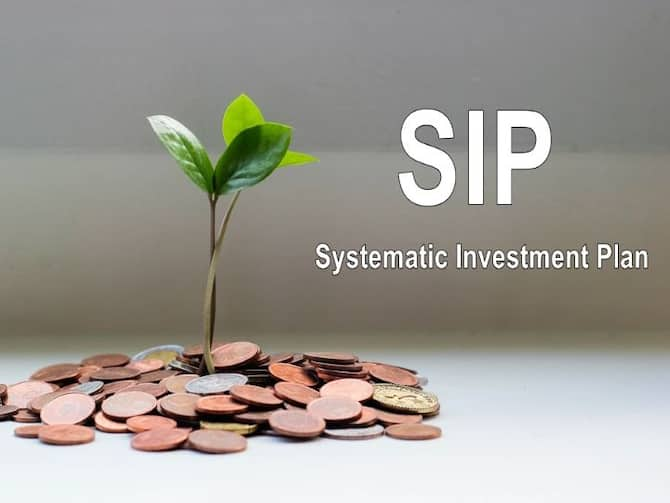Mutual Funds SIP: How small caps can outperform other segments in terms of wealth creation — ICICI Pru expert explains

Mutual Funds SIP: How small caps can outperform other segments in terms of wealth creation — ICICI Pru expert explains
In an exclusive interview with Livemint, Anish Tawakley, Deputy CIO of Equity at ICICI Prudential AMC, shared his insights on the investment landscape in India. While acknowledging the structurally favorable position of India, he also highlighted the presence of potential challenges. Tawakley recommended investing in hybrid categories, such as equity savings, balance advantage, aggressive hybrid, and multi-asset funds.

Tawakley expressed optimism about specific sectors, including auto, pharma, and telecom. He suggested that now could be a favourable time to enter the IT sector, citing the potential growth drivers of cloud migration and penetration in the future.
Furthermore, Tawakley advised investors to consider small-cap funds through systematic investment plans (SIPs) for long-term wealth creation. He specifically mentioned the ICICI Pru Small Cap Fund as a good avenue for investment.
It’s important to note that investment decisions should be based on individual financial goals, risk appetite, and thorough research. Investors should consult with financial advisors and conduct their due diligence before making investment decisions.
If you are looking to tweak your portfolio for the short term in light of the potential challenges and intermittent volatility in the market, here are some suggestions based on the recommendations provided:
- Consider Hybrid Categories: Allocate a portion of your portfolio to hybrid categories like equity savings, balance advantage, aggressive hybrid, and multi-asset funds. These funds invest in a combination of asset classes, providing diversification and potentially more favourable investor outcomes compared to investing solely in a single asset class.
- Lump Sum Investment: Instead of spreading your investments over time, consider investing a lump sum into these hybrid categories. Lump sum investing can be suitable for those with a significant amount of funds to support upfront.
- Assess Risk Profile: Before making any changes to your portfolio, reassess your risk profile and investment goals. Hybrid categories have different risk profiles and investment strategies, so ensure they align with your risk tolerance and financial objectives.
- Diversification: Evaluate your existing portfolio and ensure it is adequately diversified across different asset classes, sectors, and geographies. Diversification can help reduce risk and mitigate the impact of market volatility.
- Consult with a Financial Advisor: Seek guidance from a qualified financial advisor who can assess your circumstances and provide personalized recommendations based on your financial goals, risk tolerance, and market outlook.
- Monitor Global Macros and Geopolitical Environment: Stay informed about global macroeconomic trends and geopolitical developments that could impact the markets. Regularly review your portfolio and adjust it to align with the evolving market conditions.
Remember that investing involves risks, and market conditions can change rapidly. It is essential to conduct thorough research, consider your investment horizon, and make decisions based on your financial situation and goals.
According to the information, the auto, pharma, and telecom sectors are expected to outperform in the medium term. Here are some key points highlighting the potential for each sector:
- Auto Sector: The auto sector is anticipated to continue its outperformance due to extending sales upcycles and margin expansion. The sales of electric vehicles (EVs) have seen a significant uptick driven by affordability, availability, and acceptance. Additionally, the sector is experiencing a shift towards sustainable mobility, which further supports the positive outlook for EVs.
- Pharma Sector: Companies with solid franchise networks in the domestic market are expected to benefit in the pharma sector. Factors such as price hikes in India, currency depreciation, and gradual normalization of the supply chain are likely to impact the Indian pharma industry positively. These factors can contribute to the growth and profitability of pharma companies.
- Telecom Sector: The telecom sector is believed to be on the cusp of a multi-year upcycle driven by various factors. Changing usage behaviour, consolidating industry structure, the momentum of the 5G rollout, and the realization of spectrum usage charge savings are expected to contribute to the sector’s positive outlook. These factors create a favourable environment for telecom companies and set the stage for potential growth.
It is important to note that market conditions and trends can change, and sector performance is subject to various factors and risks. Therefore, it is advisable to conduct thorough research and consider individual investment goals, risk tolerance, and market dynamics before making any investment decisions. Consulting with a financial advisor can provide further insights and guidance tailored to your investment needs.

According to the information, the IT sector may face near-term challenges and moderated growth. However, there are potential growth drivers and factors that could positively impact the industry in the future. Here are some key points to consider:
- Growth Drivers: Cloud migration and penetration are expected to be significant growth drivers for the IT sector. As businesses increasingly adopt cloud technology, IT companies specializing in cloud services and solutions may benefit from the demand.
- Margin Improvement: Several factors, such as the increased proportion of junior personnel, outsourcing opportunities, better utilization of resources, salary rationalization, price increases, and depreciation of the Indian Rupee (INR), can potentially contribute to margin improvement in the IT sector.
- Investment Opportunity: Despite near-term volatility, it is suggested that it is an excellent time to enter the IT sector from an investment perspective, considering a 2-4-year timeframe. Investing through systematic investment plans (SIPs) can help manage volatility by spreading investments over time.
It’s important to note that investing in any sector carries risks, and market conditions can change. It’s recommended to conduct thorough research, analyze individual companies within the IT sector, and consider your investment goals, risk tolerance, and time horizon before making investment decisions. Consulting with a financial advisor can provide personalized advice based on your circumstances.

For small-cap equity mutual fund (MF) investors, here are some key points to consider:
- Long-Term Potential: Historically, small-cap funds have shown the potential to deliver significant alpha over longer timeframes. This means that investing in well-selected small-cap companies can result in attractive returns over the long term.
- Focus on Fund Performance: The performance of small-cap funds often follows the earnings and cash flow growth of the companies in which they invest. Therefore, it is important to evaluate the track record and performance of the fund to assess its ability to identify companies with solid growth prospects.
- Company Selection Criteria: Look for small-cap funds that focus on companies with good medium to long-term earnings and cash flow growth prospects. Consider factors such as business longevity, competitive advantages, and management quality when assessing the potential for wealth creation.
- Systematic Investment Plans (SIP): Investing through SIPs is a preferred way to take exposure to small-cap funds. SIPs allow you to invest a fixed amount at regular intervals, which can help manage market volatility and potentially benefit from rupee-cost averaging.
- Consider ICICI Pru Small cap Fund: As recommended by Anish Tawakley, Deputy CIO Equity, ICICI Prudential AMC, the ICICI Pru Small cap fund is considered a promising avenue for investors looking to invest in a small-cap fund with better risk-reward metrics. However, conducting your research and evaluating your investment goals and risk tolerance before making any investment decisions is essential.
Remember that small-cap investing involves higher risks compared to large-cap or diversified funds. It’s advisable to carefully assess your risk appetite and consult with a financial advisor to determine the suitability of small-cap funds for your investment portfolio.




